Sonos Move review
Sonos truly has a smart speaker for every occasion. There’s the Beam soundbar and Playbase speaker and TV stand rolled into one both designed to enhance your viewing experience. Then there’s the fantastic-sounding Play:5, which packs a punch and the One, a top smart speaker option.
The brand even boasts bookshelves and lamps now, thanks to its recent collaboration with Ikea. The missing piece of this puzzle? There’s no outdoor speaker. But that changed with Sonos launched the Move - and (spoiler alert) it's been our best Bluetooth speaker since it launched in 2019 – perfect for both indoor and outdoor listening.
The Sonos Move offers on-the-go Bluetooth play, as well as integrating with a multi-room networked speaker system over Wi-Fi. In this way, it’s got most of the functionality of a regular Sonos, along with the very appealing ability to untether it from a power supply, thanks to an internal battery.
A new and improved model of this exceptional Bluetooth speaker is now available, too. It brings improved battery life, an extra hour of charge to ensure those trips to the beach – or just out of reaching distance of a plug socket – are packed with quality sound as long as possible.
Another key difference is it’s hard a makeover. The new Lunar White version of the Sonos Move gives a white/silver new look to the portable speaker, and should provide more variety.
Read on for our original Sonos Move review.
[Update: Sonos seems to be on the verge of launching a new portable Bluetooth speaker, after details of the so-called Sonos Roam were leaked.
According to an inside source who spoke to The Verge , the Sonos Roam will be available on April 20 for $169 (around £120 / AU$220) – and with a Sonos launch event coming up on March 9, we shouldn't have to wait too long to see if these claims are legitimate.
For now, you can check out our comparison of the Sonos Roam vs Sonos Move for the key changes we're expecting.]
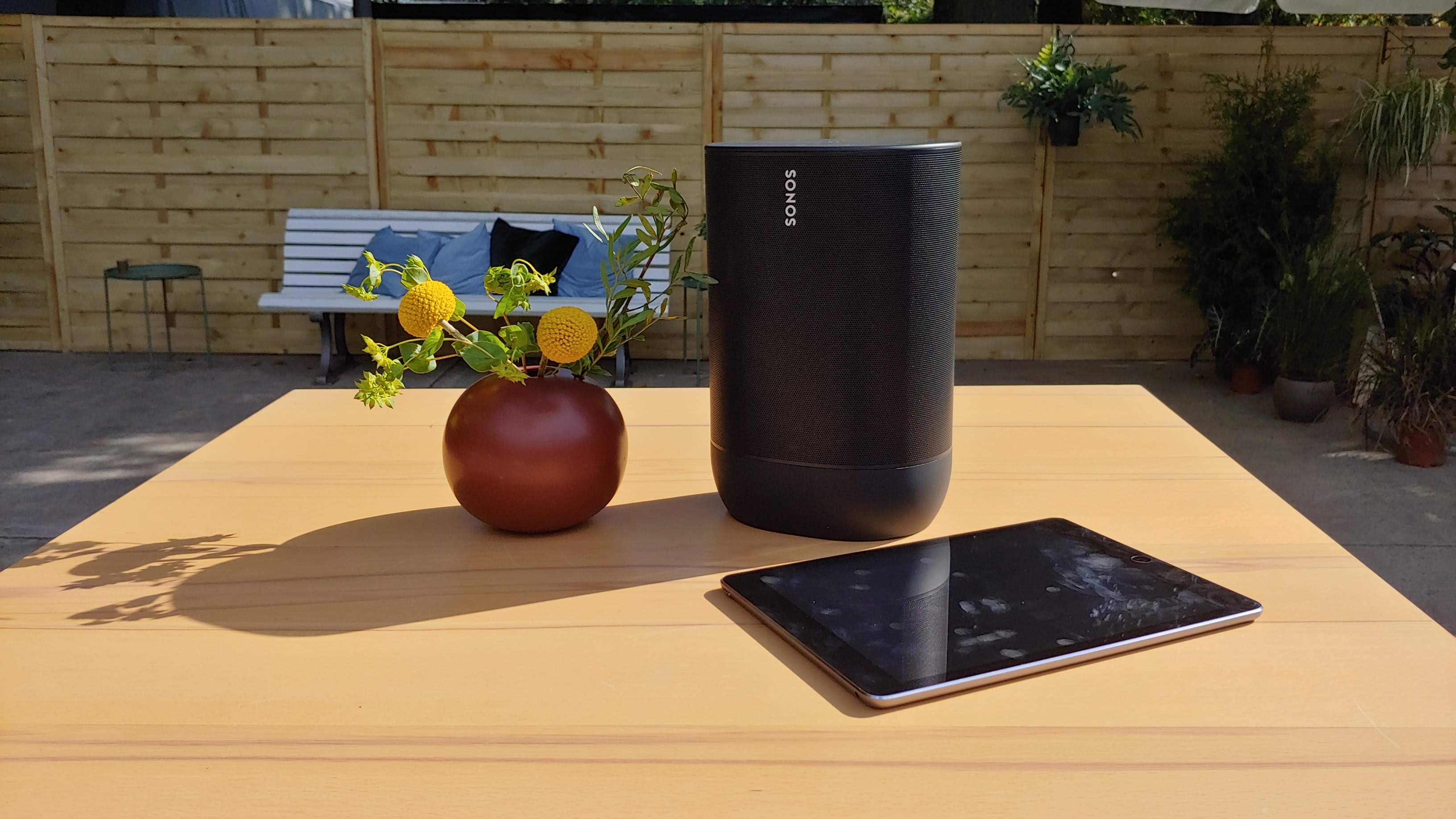
Price and availability
The Sonos Move went on sale on September 24, 2019 costing $399 / £399 / AU$649.
That’s pricey for a portable speaker – but this isn’t your average Bluetooth boombox, making it difficult to place alongside any direct competition. Few portable speakers, even those with smart assistants built-in, have as rich a feature-list as the Sonos Move, so that higher price tag is more easily justified.
Design
Sonos products command a high price tag, and the Sonos Move is no different – but it’s been engineered to within an inch of its life in order to justify the claim on your hard earned cash.
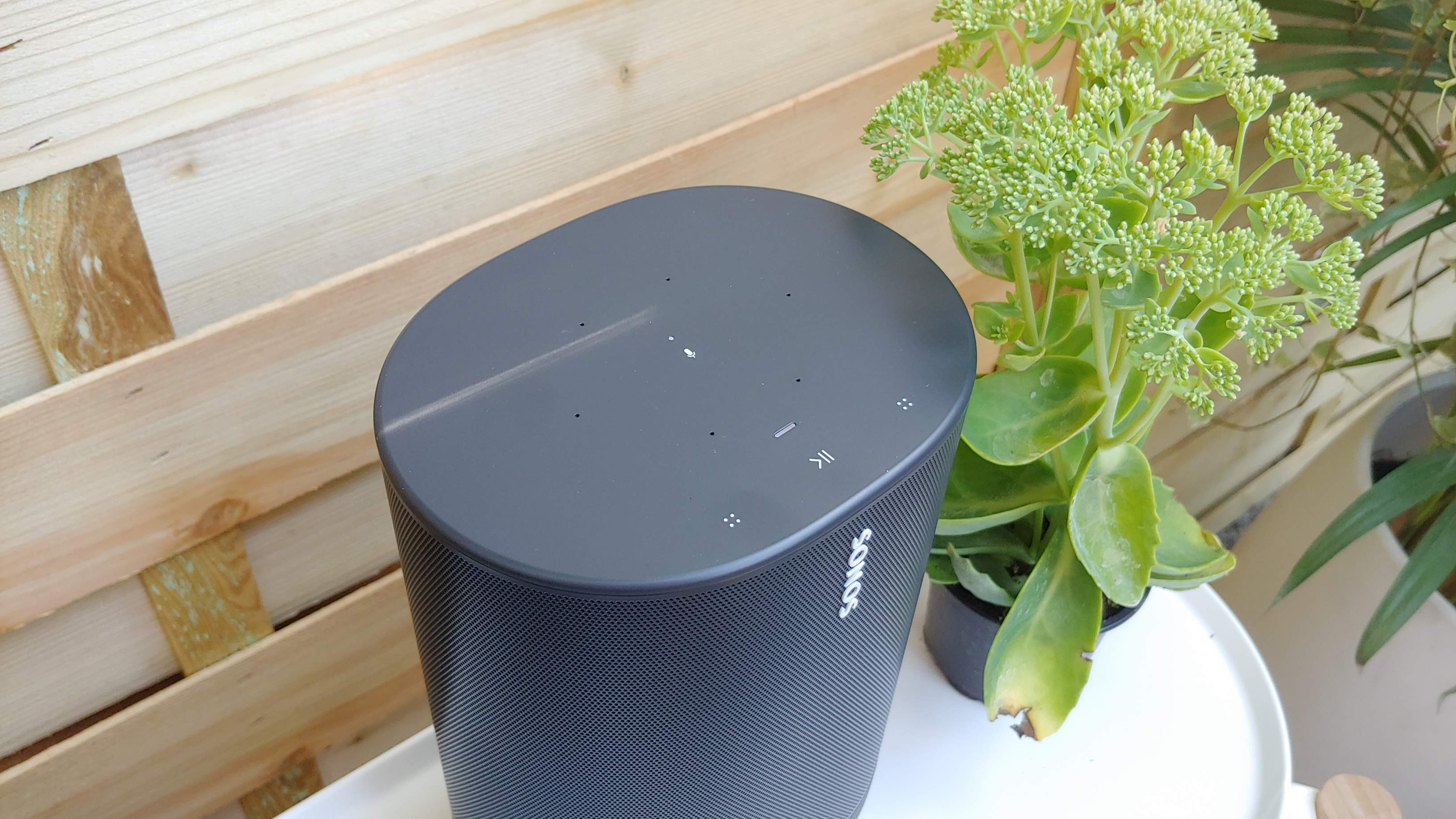
It’s very much in the style of previous Sonos models. You’ve a black speaker with a metal front grille, with capacitive playback control buttons along the top alongside an array of four far field mics. Around the rear you'll find a power button, a Bluetooth / Wi-Fi toggle button and a multi-room pairing button.
In terms of audio guts, the Sonos Move makes use of two Class-D digital amplifiers, one downward-firing tweeter for highs and one mid-woofer integrated into the cabinet for mid-ranges and bass. Sonos has built the enclosure cutaway to be resonant and balanced from all angles – the outside world knows no boundaries, after all.
As a portable product, it’s been vigorously tested for durability. Sonos also claims that it can withstand extremes of cold and heat – so whether your party is in the desert or the middle of a snowstorm, the Sonos Move should have you covered. It’s IP56 rated, meaning it’ll withstand a coating with sand or dust, as well as a drop into a swimming pool. There’s even run-off channels within the casing for water to drain out through, while Sonos claims that during drop tests a concrete slab broke before the speaker even took a dent.
That’ll be down to its weight, we’d imagine. Standing 240 x 160 x 126 mm, it’s portable, but it’s not small. At close to 3kg, you can lift the Sonos Move with ease, but you wouldn’t want to carry it around for too long. That’s a necessity of the large driver magnets in place here, and it’s a fair trade to make for the audio quality that’s delivered. To ease the load, the casing has a concave handle gap on the rear to make carrying it around a little easier.
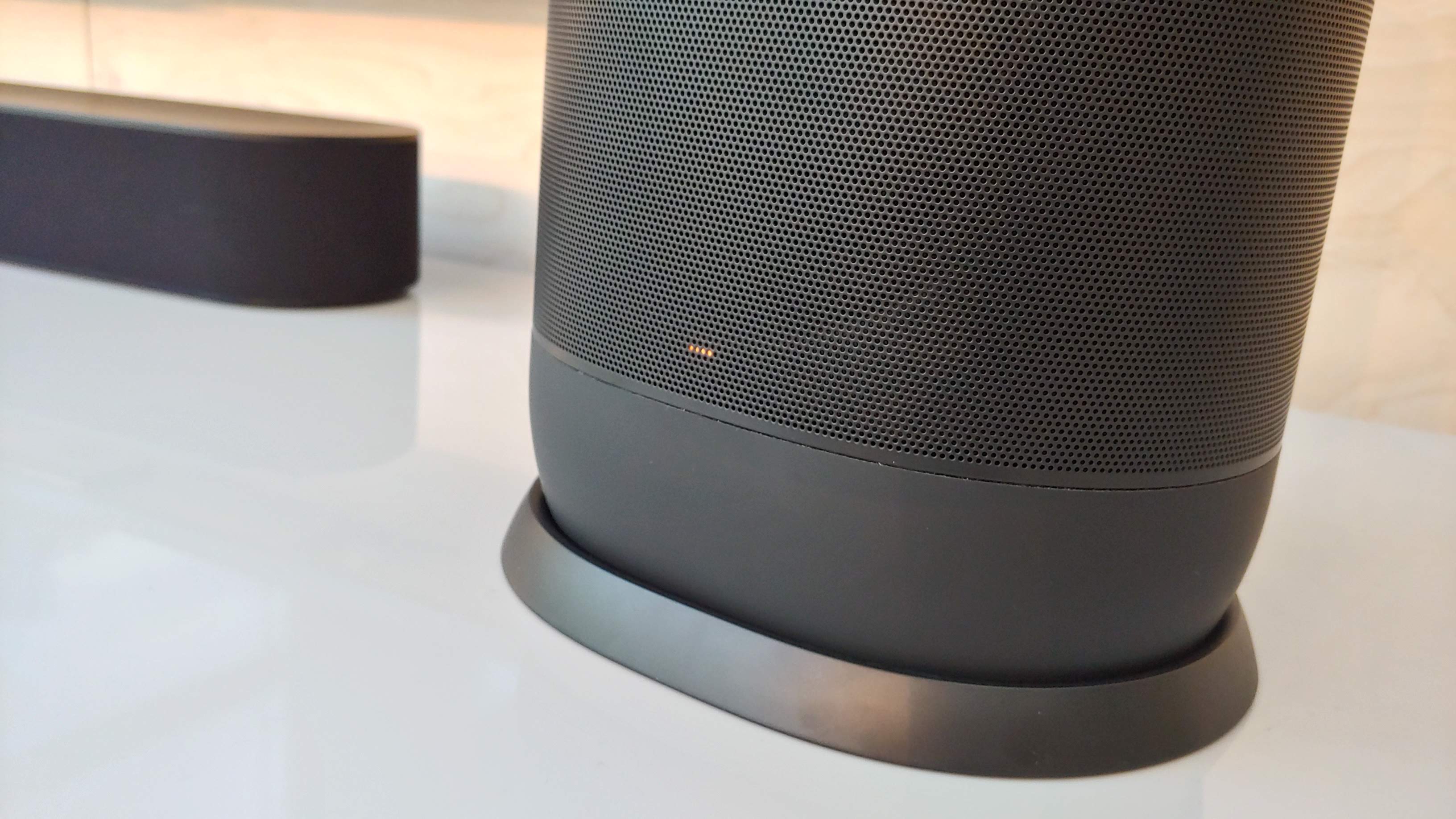
Based on our testing, battery life should be good for the quoted 10 hours, and will fully charge in around 2.5 hours. The speaker can charge over USB-C, but you’ll likely use the included docking base ring, which charges the speaker any time it’s left to rest in it. The Sonos Move also uses a standby-like mode to save power when it notices it hasn’t been used for 30 minutes or so – this lets it conserve power for up to 5 days without a charge, but also gives it enough juice to let it be woken from its slumber wirelessly.
There are laudable eco-credentials here too. Sonos predicts, on average usage, battery degradation to occur after about 900 charge cycles, or roughly three years of day-to-day use. Rather than expecting you to throw your premium speaker away, it’ll instead (for an as-yet-undisclosed fee) offer up a replacement battery which you can easily install into the base of the speaker yourself.
Smart features
Sonos has a long heritage in connected and wireless audio, and just because this is its first attempt at going portable, that doesn’t mean it’s dropping any of that connectivity. Like other Sonos speakers, the Move can be made to work in a stereo pairing, or also as part of a multi-room group. If you want the Move to play in the garden the same tunes as are playing elsewhere in your home over a Sonos system, it’ll do so without missing a beat.
The Sonos Move will work with all manner of connected audio sources, online or stored on a local network. If you want to fire up a playlist on Spotify using Spotify Connect, that’s just as simple in-app as playing something you’ve ripped to a networked storage device yourself. Just fire up the Sonos app, and once set up and connected to the internet all your sources appear over Wi-Fi.
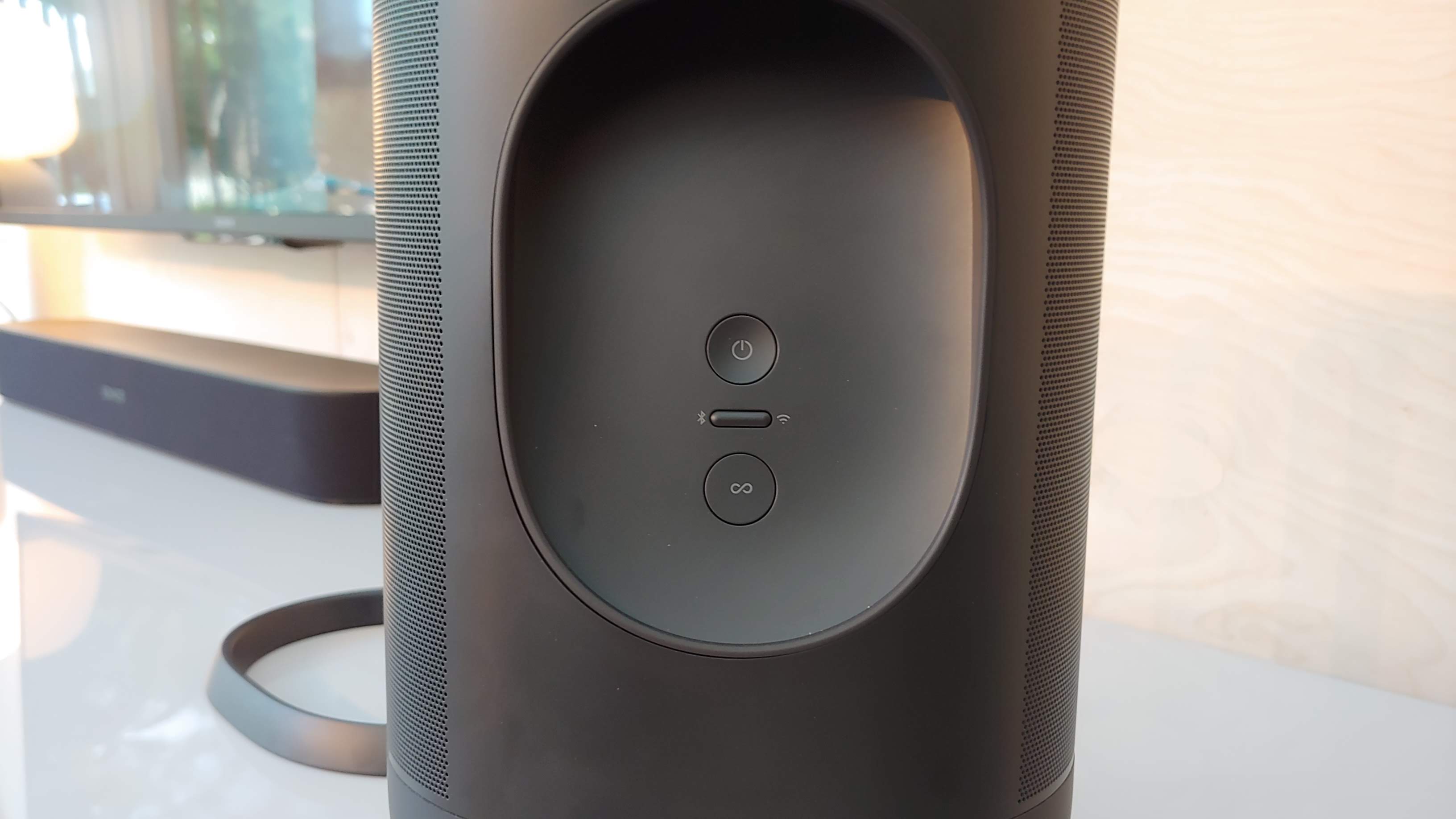
Move out of range of a Wi-Fi connection, and you’ve Bluetooth to fall back on. It’s the 4.2 version of the connectivity standard, rather than the newer 5.0, but Sonos claims its experience with the 4.2 version of Bluetooth has let it eke more power saving and range capabilities out of 4.2 than ever before. While it’s not quoting range for either its Bluetooth or Wi-Fi connections, it’s simply stating that “if you can hear it, you can control it”. Four Wi-Fi antennas sit dotted around the base of the Move, with the Bluetooth module situated on top to give the best coverage possible. AirPlay 2 is also supported, for the Apple-device contingent out there.
That top-mounted array of mics serves a dual purpose. Firstly, it gives you access to a choice of either Amazon Alexa of Google Assistant voice assistants – each AI helper is fully compatible with the Sonos Move, giving you the option as to which you want to use to set reminders, control smart home devices, access calendar and act as a voice-powered jukebox.
The mics and smart assistant pairing works superbly here. Even across a chatty office and with the speaker playing a song by The National, it was able to pick up our requests – even if the responses weren't always quite what we were after. But that's on Amazon and Google's AI helpers, not Sonos's engineers.
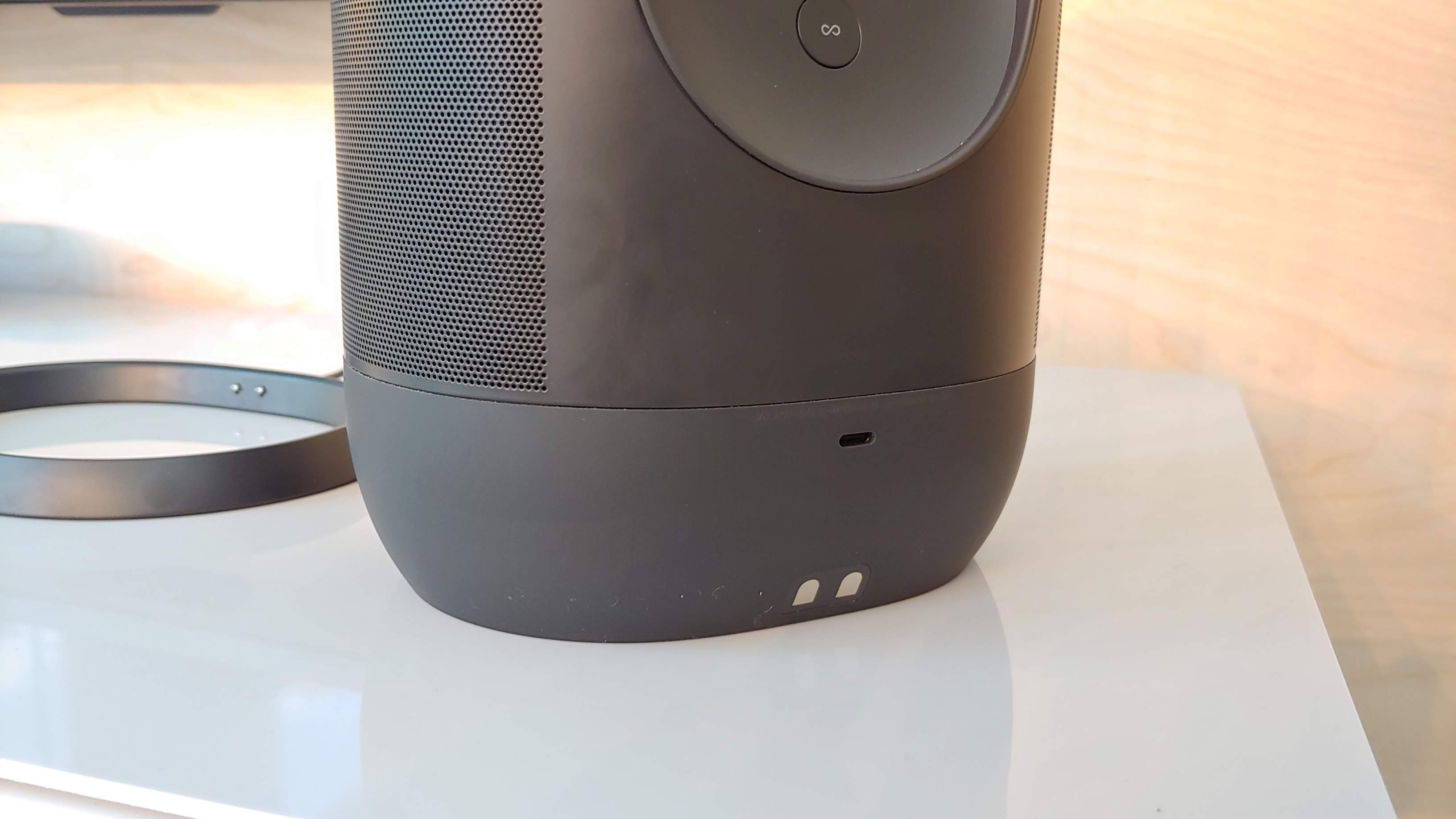
Secondly, those mics are also the heart of the ‘Trueplay’ audio-tweaking system. They analyse the output from the Sonos Move and how its surroundings are affecting it, and automatically adjust it to bring it closer to the intended studio sound. What’s really clever is that it knows when the Sonos Move has, err, moved – there’s an accelerometer onboard that triggers the TruePlay system’s tweaks when it detects movement.
Pretty much the only thing the Move won’t support, however, is being used as part of a home cinema system’s 5.1 rear channels, as some other Sonos devices can be. Sonos states that this is due to sync issues, and the problematic potential for a directional soundtrack to lose its focus if a speaker can be misplaced in a room. But it’s a shame given the wire-free surround sound potential that could have been delivered here.
Audio performance
The Sonos Move doesn’t sound like a portable speaker. If you’re familiar with the Sonos range for the home, this would sit somewhere between the Sonos One and the Play:5, not just in terms of volume, but also fidelity. The mid-range driver offers forceful and space-filling low end, even when competing with the acoustics of a wide open space, while there’s no drop off in vocal clarity that can often occur with lesser portable speakers. The Sonos Move is very much a match for the Sonos home range, but let loose thanks to its battery.
We put the Sonos Move through its paces with a menagerie of songs, musical styles, and in a variety of different locations.
Kelis's electro pop banger 'Acapella' shows the Sonos Move managing what few other Bluetooth speakers can – tight and punchy bass, shimmering highs and a lilting vocal that cuts through it all with direct clarity.
'Orange Crush' from R.E.M's album Green was a good test of the Sonos app's EQ options, letting you dial up and down treble and bass settings. The lo-fi track naturally favours a sharper top-end, but dialling up the bass in the EQ convincingly gives the track a little more warmth than its neutral recorded sound offers.
Michael Kiwanuka's 'Bones', with its exposed vocals, swinging guitars and jazzy band accompaniment offered a surprisingly adept soundstage from the portable speaker. Kiwanuka's voice and guitar sits notably in front of a sashaying brushed drumkit, twinkling piano lines and stabs or clean electric guitar all around him. It's almost like being in the same room as the group.
Treated to a few cuts from Tame Impala’s Currents album and Vampire Weekend’s Father of the Bride record, the Sonos Move again blew us away. The Aussie rocker’s psych-filled waves drifted effortlessly and crisply from the Sonos Move, without losing the snap and rhythm of the ‘Let it Happen’ bass line – and at a neighbour-bothering volume level, too, distortion free. Likewise, the bouncy vocal of Ezra Koenig, twanging lead and wobbly bass of Vampire Weekend’s ‘This Life’ had all the jaunty space it needed, with the soundstage sounding surprisingly wide in the multiple environments we heard the Sonos Move.
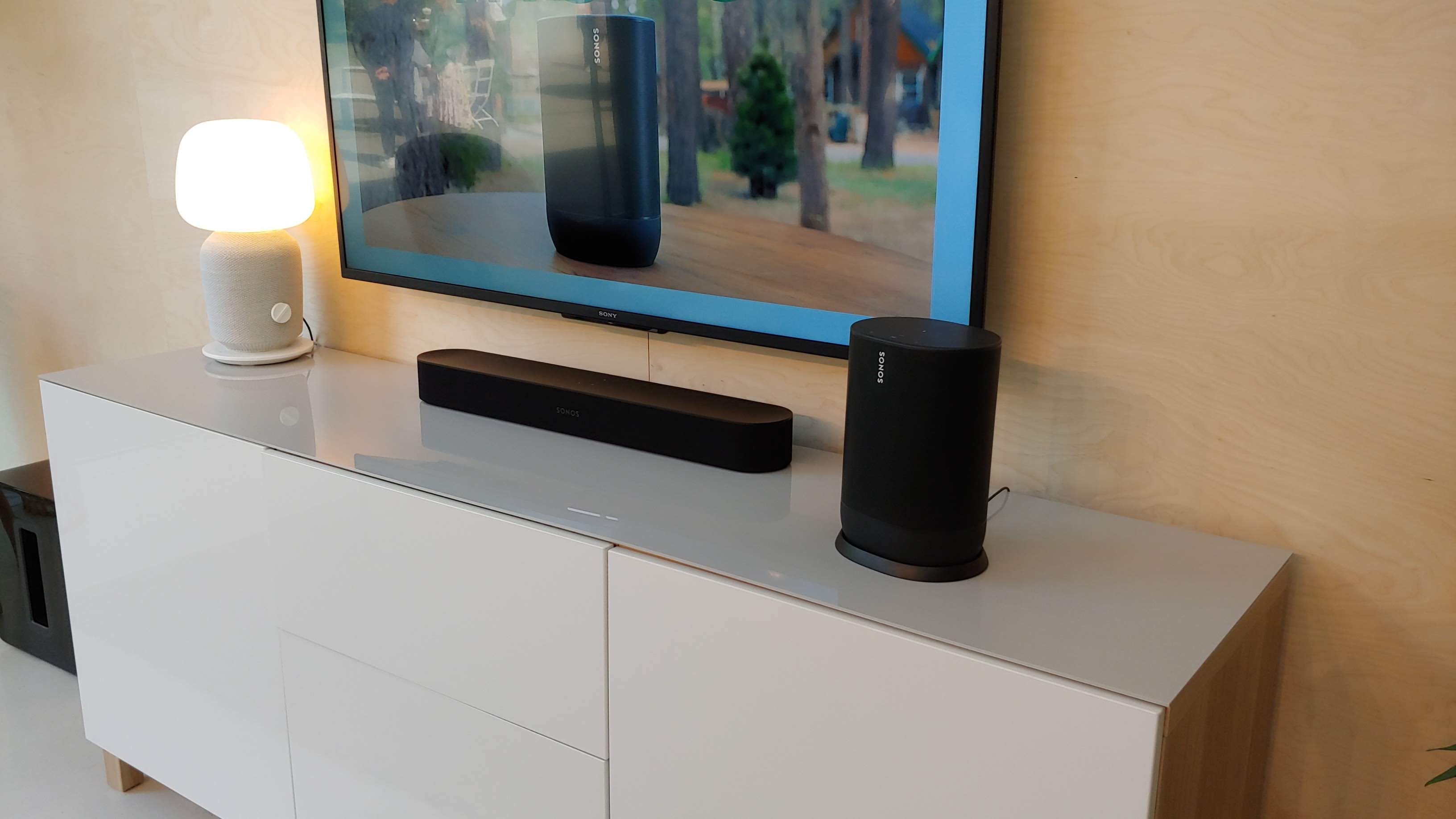
With the speaker expected to be moved around (and outside) the house, in areas with differing acoustics, the TruePlay system kicks into gear. And it’s incredibly effective at reworking the audio output to suit different environments.
At the Sonos Move launch event this was demonstrated to great effect when a Sonos team member popped on Billie Eilish’s ‘bad guy’.
First, they had the song playing up on top of a TV stand – sounding great. Then, without stopping the song, they put the speaker in a half open drawer. Initially, it didn’t sound too good – there was an overpowering boom to the bass, showing none of the song’s production subtlety, and some drop-off in the clarity of the vocals. But, after about 20 seconds, the Trueplay system had assessed its surroundings using the onboard mic, dialled back the bass a touch, and everything sounded much more enjoyable again. It was an impressive showcase of the system’s capabilities.
The speaker more than holds its own in the great outdoors too. The TechRadar test team turned some heads when blasting out ABBA tracks (a not-so-guilty pleasure) in a local park, at impressive volume levels. Again, it's clarity and low-end punch was not lost, even as cars and sirens passed. It's hard to imagine an owner often taking the Sonos Move far beyond the boundaries of their own garden given its size, but you've enough power here to comfortably fill a (modest) field.
Verdict
Having waited this long for a Sonos portable speaker, the company had to pull something special out of the bag, and it has. There’s flexibility here with the Sonos Move in terms of how it can be used, from on-the-go portable playback to being part of an in-the-home multi room set-up. It’s disappointing that the potential to use the Sonos Move as part of a home-cinema surround sound set-up isn’t here, but overall, color us impressed.
With its powerful driver and full access to the Sonos software ecosystem, what you're really getting here is a full-blown Sonos home speaker, which just so happens to be portable. Not that the portability is an afterthought – battery life, carrying handles and durability account for that – but it's the fact that the Sonos Move can hold its own with powered home speakers (smart assistants and all) and not lose out that impresses the most. That price tag is going to sting initially, but what the Sonos Move offers more than makes up for it.
- Best smart speakers: which one should you buy?
0 comments:
Post a Comment